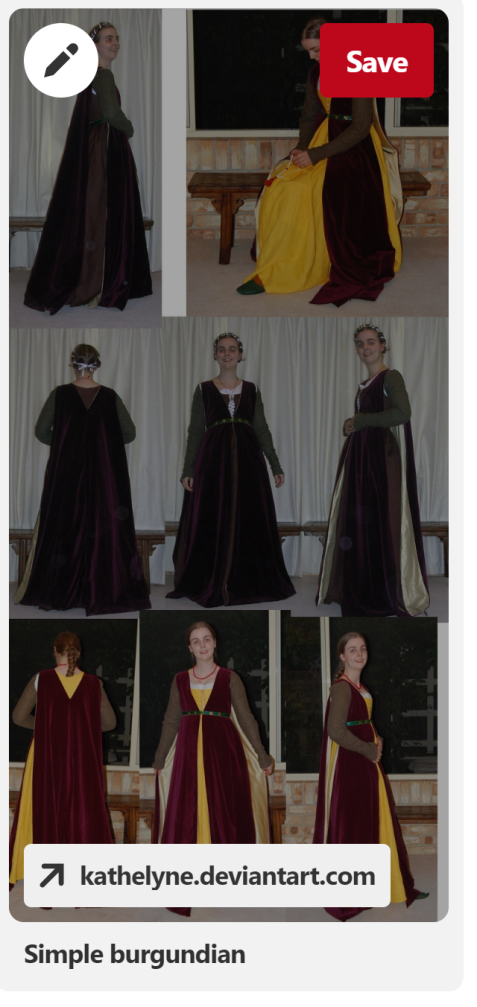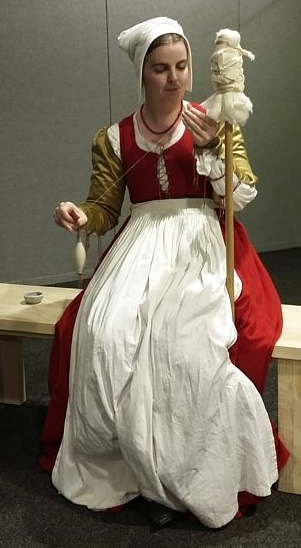“Pinterest isn’t authentic”
“Avoid Pinterest it is in no way authentic.”
“Don’t use Pinterest for your research, it’s not authentic”
Pinterest, love it or hate it? I hear a lot of criticisms about the use of Pinterest in research, specifically for research amongst medieval living historians, reenactors or other recreationalists. The above are verbatim quotes I’ve come across recently. “Pinterest is in no way authentic”- what does that even mean? It’s a website, they didn’t have websites in the middle ages right? Well, the point they are all making is that pinterest should not be used for researching our hobby. But are they right?
What is Pinterest?
While we’re on the subject of bad sources, lets see what Wikipedia has to say:
“Pinterest is a web and mobile application company that operates a software system designed to discover information on the World Wide Web, mainly using images and on a smaller scale, GIFs and videos.”
Hmmm… well, obviously not a good source, right?
Lets see what pinterest has to say about what it is:
“Pinterest is where people discover new ideas and find inspiration to do the things they love!
Pins are ideas that help you get creative or try something new, whether you’re planning a camping trip or collecting home improvement hacks.
Pins are saved to boards, keeping your ideas organized and easy to find. Follow other people or boards that are saving ideas you’re interested in, so you can do even more of what you love.”
and
“What are Pins?
Pins are ideas people find and save from around the web.
Each Pin links back to the website it was saved from. If you click through the Pin you can learn more about it—like how to make it or where to buy it.” [emphasis mine]
Ok, so it seems that both our sources agree to some extent:
Pinterest is a way of saving information or ideas from the internet. The ‘pin’ links back to the source.
The way I see it?
Pinterest is an advanced version of your computer’s ‘bookmark’ or ‘favourite’ function.
Yes, that’s right. Lets look at the similarities and differences.
| Bookmarks | |
| Is a way to save information or an idea you’ve found on a website | Is a way to save information or an idea you’ve found on a website |
| Designed to take you back to the source of the idea/information | Designed to take you back to the source of the idea/information |
| Uses a visual and text prompt to remind you of the idea/information you’ve saved/bookmarked | Uses a text prompt only to remind you of the idea/information you’ve saved/bookmarked |
| Can be organised into categories | Can be organised into categories |
| Can be kept private | Can be kept private |
| Can be shared publicly, with your saves/bookmarks viewable and saved by others | Generally are not shared publicly, however, Pinterest isn’t the only bookmarking site to have this feature |
| If the original source is moved or deleted, you will now have a dead link. | If the original source is moved or deleted, you will now have a dead link. |
| If the original source is moved or deleted you have both a text and visual prompt to track down a new source | If the original source is moved or deleted you have only a text prompt to track down a new source |
Ok, so there are some differences, but there are a lot of similarities.
Interestingly I’ve never come across someone saying “Don’t save sources to your bookmarks, your bookmarks are not authentic.” Or “your browser bookmarks are not authentic and shouldn’t be used for research.”
What is Pinterest not?
Pinterest is not a source. It is a way to collect and bookmark sources. The difference is key.
I will use an example.
Ten years ago (ok, now I feel old) I made a Italian dress that was burgundy in colour. I put it on deviant art. Some years ago someone bookmarked it on Pinterest with the caption ‘Simple burgundian.”

“Burgundian” is usually used in historical costuming circles to refer to a style of dress popular in France in the 15th Century. This dress is very different from the dress I had made.
So, if you’re using Pinterest as a source, you’d see this Italian dress being billed as a French dress.
If you use Pinterest correctly (as it was intended), and click the picture to go to the source, you get the following:


The source clearly identifies that this dress is NOT French, but Italian. And you know what? Even if the source hadn’t been clear about the origins of this dress it’s still not the fault of Pinterest, the fault would lie with the person who put the source up in the first place (in this case me).
So now we have the source, and we can look critically at the source (uh oh).
What sort of source is this? Is it a good source?
No, this is not a good source. In my post I included no research, no primary or secondary sources. At best, this is a tertiary source with nothing to back it up. This was posted on an art website. I used the website to show off what I had made, not to store or my research.
In this case the pin didn’t lead to a good source, but many do. They might lead to a museum website or a journal article—you never know until you click.
But mislabeled pins are a huge issue? They mislead people and say something is what it isn’t.
No, they’re not really a huge issue. They’re an annoyance, but we’re researches, we follow the bookmark to the source and then critically examine the source.
I think about some of my old computer bookmarks.
“Awesome medieval corsets” lead to a page that sold modern, Victorian inspired corsets, but they sold some that were medieval themed, as in were made out of fabrics with medieval images on them. The name made sense to me, but if this was on Pinterest someone else might misinterpret that as me saying the corsets were medieval and use it as an example of how ‘Pinterest is wrong.’
Another example, I had a link saved as “Kim song medieval.” The song lyrics linked were the lyrics of a sing I heard a lady named Kim sing. I had bookmarked the lyrics to go back and research IF the song was medieval (it wasn’t).
But what about broken links?
Broken links are a pain- no matter if it’s a broken pin or a broken bookmark. But there is an advantage to a broken link on Pinterest- you have both text and image to help you track down the source. It gets really annoying when you end up going in a circle (google keeps taking you to Pinterest again and again and around and around… see, annoying!) but your chances are better with text AND image than with just text.
But what about people uploading pins?
This is annoying when people do this and then don’t put the source in the caption. But Pinterest is not a source, you’ll need to track that down. See the point above.
In summary:
When I started researching we were told not to use the internet at all for research, because everything on the internet is wrong. My answer then was the same it is now, and the same as what I was taught at university when studying history and archaeology—look critically at the source. Save your research on Pinterest if you wish, start your research on Pinterest if you wish, but don’t DO your research on Pinterest. Pinterest is not a source.










